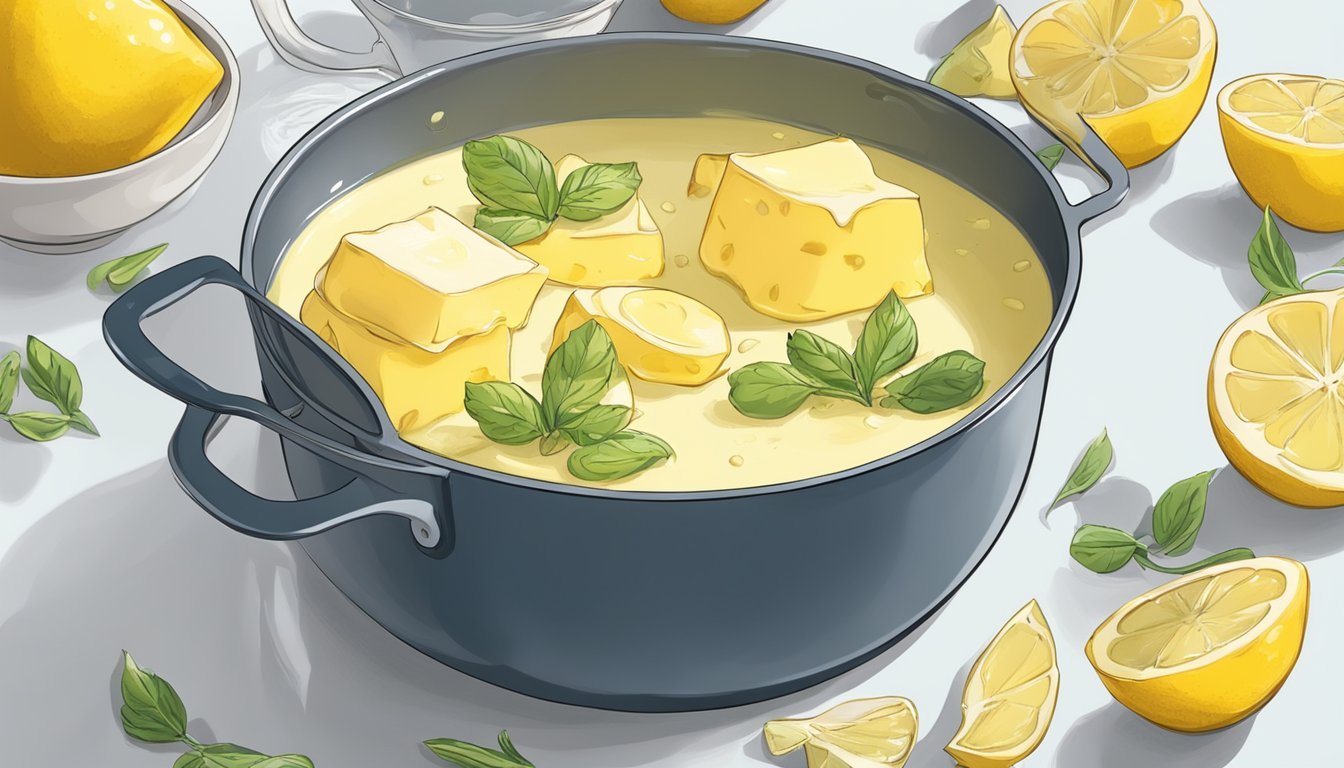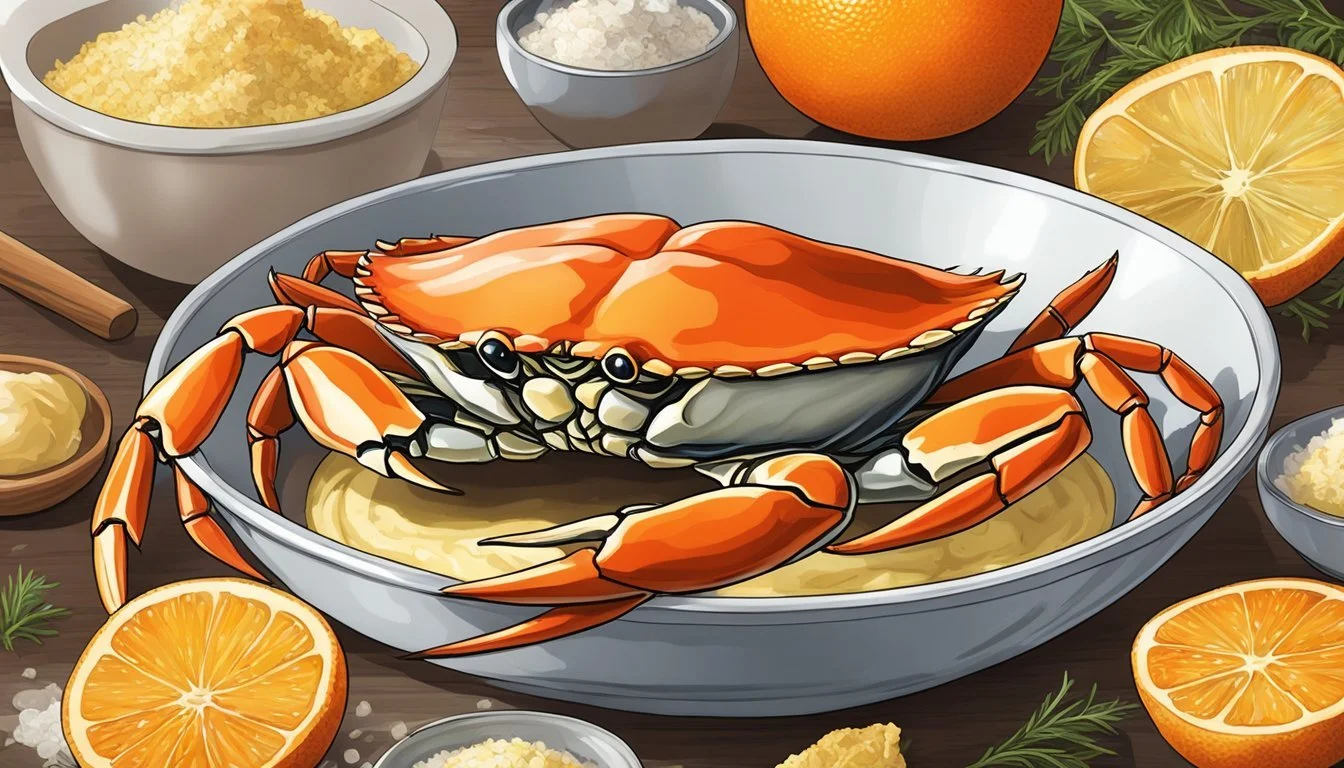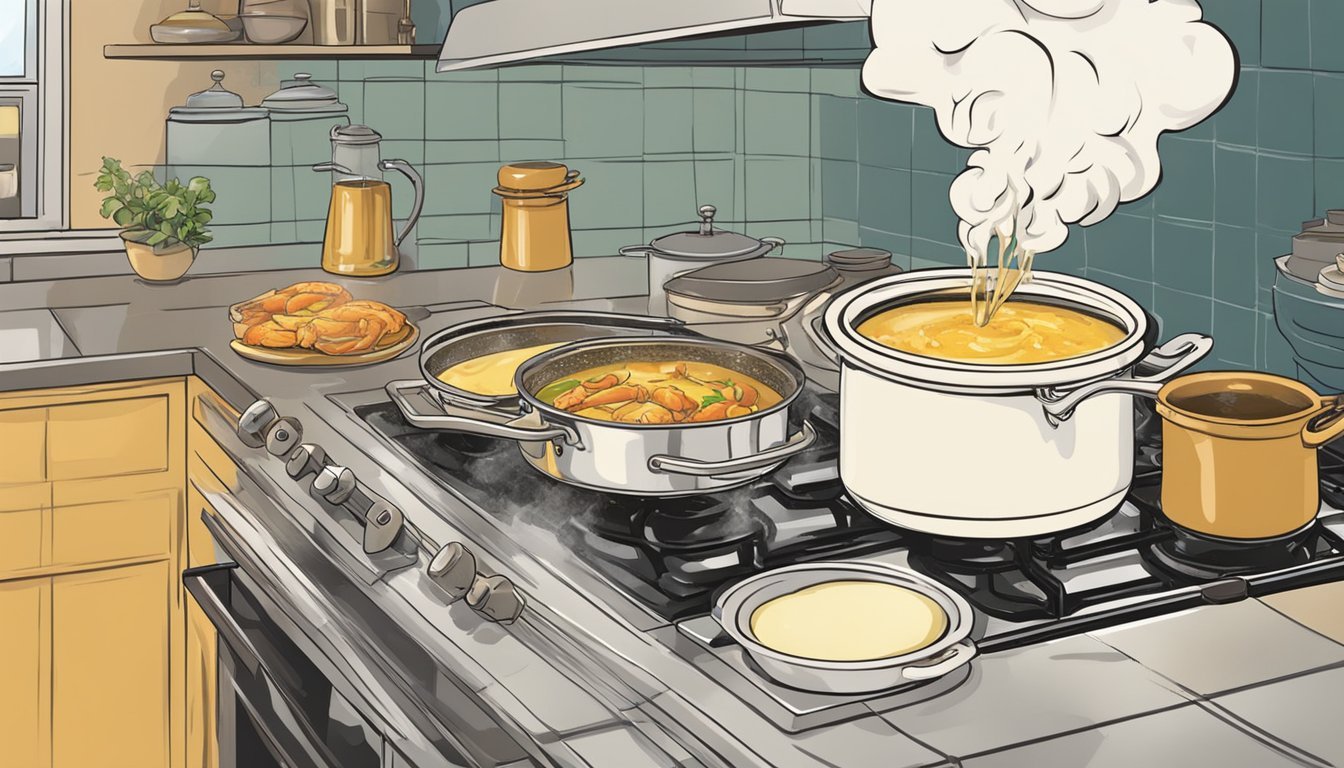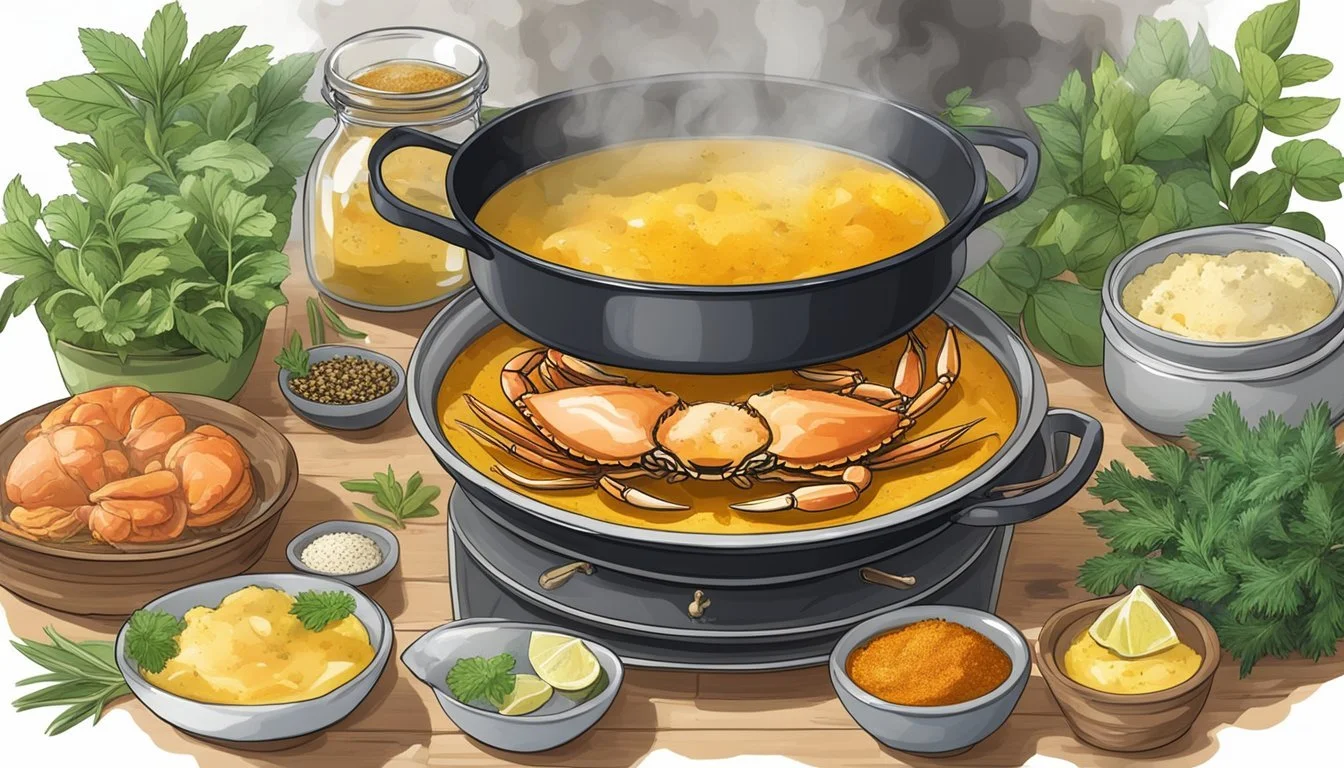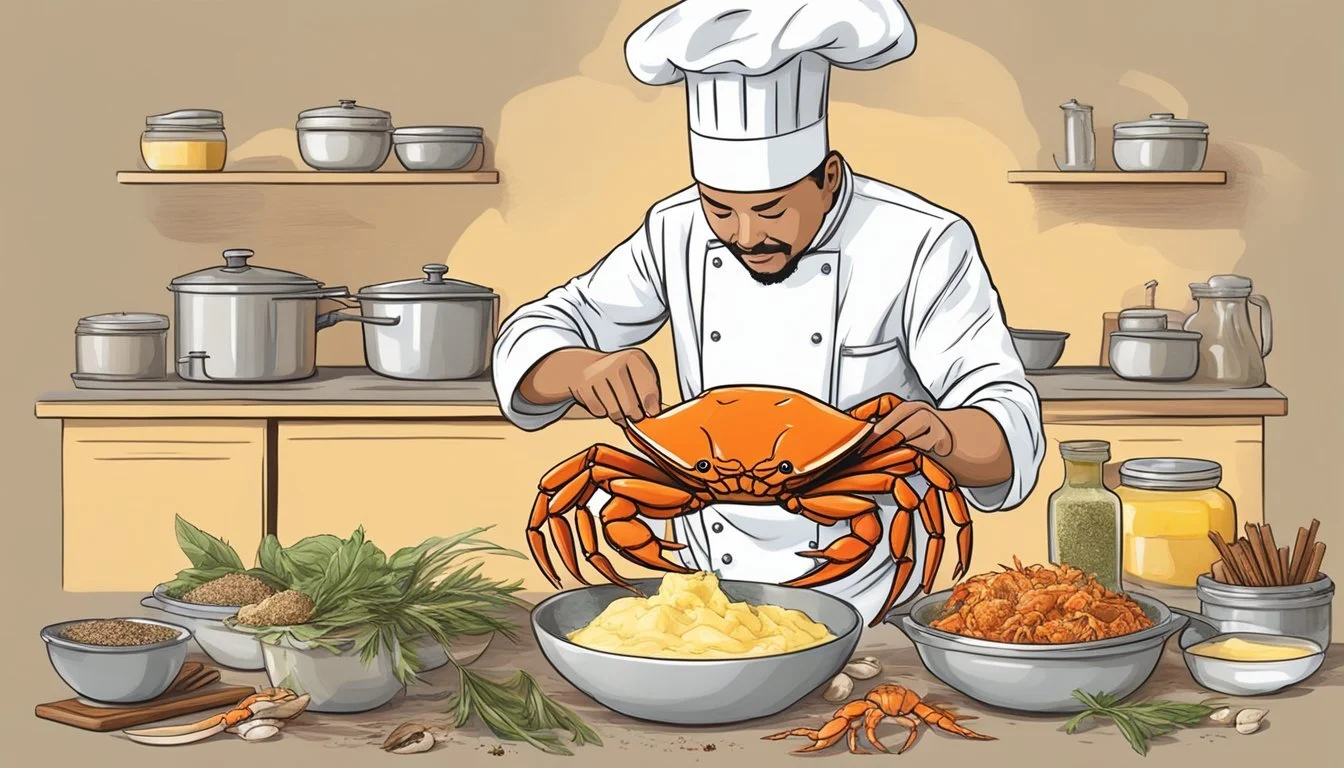How to Make Flavorful Crab Tomalley Butter from Scratch
A Culinary Guide
Crab (What wine goes well with crab?) butter, crafted from the rich and flavorful tomalley of crabs, offers an exceptional twist on traditional butter. Often referred to as the crab's liver, tomalley is the green-hued substance found within the body cavity that serves as both the liver and the pancreas of crustaceans like crabs and lobsters. This delicious byproduct of crab preparation is treasured for its intense flavor and luxurious texture.
The process of making crab tomalley butter is straightforward, allowing culinary enthusiasts to elevate their dishes with a seafood-infused component. By incorporating the tomalley into softened butter, one creates a versatile ingredient that can be used as a delectable spread on bread, a rich garnish for dishes such as steak or fish, or a base for sumptuous sauces.
Not only does crab tomalley butter infuse the essence of the sea into any meal, but it also instills a gourmet touch to home cooking that can rival restaurant-quality fare. Properly cooked and seasoned, this delicacy harnesses the natural flavors of the crab, offering an indulgent taste experience that complements a host of recipes.
Understanding Crab Tomalley
Crab tomalley refers to the greenish-yellow substance found within the body cavity of lobsters (What wine goes well with lobster?) and crabs. It is often considered the lobster or crab's liver and pancreas, but for culinary purposes, it's known for its rich, concentrated seafood flavor which can enhance a variety of recipes.
Composition and Flavor: The tomalley serves as a filtration system for the crab, and as such, it contains a higher concentration of crab flavor. It's a delicacy in many cultures and regarded as the essence of the crustacean's flavor profile. Due to its potent flavor, crab tomalley is used sparingly, typically as an addition to sauces, butters, or spreads.
Nutritional Value: While tomalley is flavorful, it is rich in both protein and fat. It should be noted that, as with many seafood products, there is a potential risk of contaminants due to it being the crab's filtration organ.
Use in Cuisine: Tomalley can be transformed into a culinary butter by combining it with softened unsalted butter, which enhances the flavor of various dishes, from sauces to compound butters.
Uses of Crab Tomalley Description Sauces Adds depth to pan sauces over seafood. Butters Creates compound butters for breads. Spreads Served as spreads alongside crackers.
Tomalley is an ingredient for those looking to add a punch of seafood flavor to their dishes. Chefs value it for its ability to impart a taste of the ocean in an intense, yet sophisticated manner.
Selecting the Right Ingredients
Crafting the perfect crab tomalley butter hinges on the selection of premium ingredients. Each component, from the crab meat to the herbs and butter, requires careful choice to ensure peak flavor and texture in the final product.
Choosing High-Quality Crab Meat
The foundation for flavorful crab tomalley butter is high-quality crab meat. For the richest flavor, one should seek out fresh, lump, or claw crab meat, ensuring it is free from shells and has been properly cooked, typically through steaming or sautéing. The type of crab used can range from Blue Crab, known for its sweet meat, to Dungeness or King Crab, prized for their larger, tender pieces.
Identifying Fresh Herbs and Spices
Herbs and spices contribute significantly to the butter's aromatic profile. The aim is to select the freshest parsley, thyme, dill, chives, and tarragon. The fresher the herbs, the more potent their flavor will be. As for spices, staples such as Old Bay seasoning, paprika, cayenne pepper, and black pepper are essential. Freshness in spices is also key, as it ensures a robust taste that complements the crab without overwhelming it.
Differentiating Butters
An integral ingredient to this recipe is the butter. For crab tomalley butter, one should opt for unsalted butter or European-style butter, which has a higher fat content and yields a creamier texture. The absence of salt in the butter allows for better control of seasoning to avoid overpowering the delicate crab flavor. When melted, these butters blend seamlessly with the crab, seasonings, and herbs, becoming a rich base for the dish.
Preparatory Techniques
Effective preparation is essential for crafting a rich and aromatic crab tomalley butter. This section details the steps necessary for preparing crab components, infusing flavors with herbs and spices, and clarifying butter to achieve a smooth consistency.
Cleaning and Preparing Crab
Before incorporating crab into the butter, it must be thoroughly cleaned to ensure the best quality and flavor. The process includes:
Removing the gills: They must be meticulously discarded as they are not edible and can impart a bitter taste.
Extracting the tomalley: Carefully scoop out the tomalley, the greenish substance found within the crab's cavity, which is prized for its rich, concentrated flavor.
Cooking crab meat: Prioritize fully cooking the crab meat—either by steaming or boiling—to maintain its delicate texture and taste before infusing it into the butter.
Herb and Spice Preparation
A harmonious blend of herbs and spices can significantly enhance the flavor profile of crab tomalley butter. Tips for preparation include:
Minced garlic: Mince garlic finely to ensure it distributes evenly within the butter without overpowering other flavors.
Citrus zests: Grate lemon zest and lime zest finely to infuse a fresh, aromatic undertone.
When combining these components:
Mix herbs and spices gently into the melted butter so as to not break the emulsion.
Allow the flavors to steep and meld before incorporating the crab components.
Butter Clarification Process
Creating a clarified butter base is crucial for a refined crab tomalley butter. Here's how it's done:
Heat butter: Gently melt unsalted butter over low heat. Avoid browning or boiling to maintain a neutral taste.
Separate milk solids: As the butter melts, milk solids will float to the top. Skim these off to achieve a clear, golden liquid.
Cool and strain: Let the remaining butter cool and then strain through cheesecloth to remove any remaining solids.
In summary, the crab must be clean and cooked, the herbs and spices finely prepared, and the butter adequately clarified. This meticulous approach sets the foundation for a nuanced and flavorful crab tomalley butter.
The Cooking Process
Crafting a delectable crab tomalley butter involves a careful cooking process that brings out the rich flavors of the crab and infuses them with aromatic spices and seasonings. Attention to detail is crucial to achieve the perfect balance between the creamy butter and the robust tomalley base.
Creating the Tomalley Base
To begin, one must boil fresh crabs in a large saucepan filled with water seasoned with sea salt and spices, such as Old Bay seasoning, to infuse flavor. After the crabs are fully cooked, their tomalley -- the greenish-yellow substance found in the body cavity, which is rich in flavor -- is harvested. It's important to ensure that the tomalley is carefully extracted and any remnants of the shell or gills are removed.
Incorporating Aromatics and Spices
Next, the culinary artisan sautés minced garlic in melted butter, being cautious not to burn the garlic. It simmers until fragrant, which usually takes a few minutes. The key is to use unsalted butter to manage the overall saltiness of the dish. Then, freshly squeezed lemon juice is added to the mix. This infusion of garlic, lemon juice, and butter creates a fragrant and flavorful base to which the tomalley will be added.
Finalizing the Crab Tomalley Butter Blend
The final step involves gently blending the sautéed aromatics with the tomalley to create a rich and smooth butter. For added complexity, a combination of spices, including a touch of cayenne for heat, can be whisked in. The blend should be tasted and adjusted with additional sea salt and spices to ensure a balanced flavor. Once the mixture achieves a uniform consistency, it's set aside to cool and solidify, resulting in a versatile and flavorful crab tomalley butter that is perfect for enhancing a wide array of dishes.
Serving Suggestions
Crafting the perfect crab tomalley butter is only the first step; the magic comes when it's paired thoughtfully with the right dish. Here's how to elevate a variety of meals with this rich condiment.
Pairing with Seafood
The distinctive umami of crab tomalley butter enhances the natural sweetness of seafood. It serves as an exceptional dipping sauce for lobster and shrimp, imparting a depth of flavor to these succulent choices. When drizzled atop grilled scallops (What wine goes well with scallops?) or steamed mussels (What wine goes well with mussels?) and clams, (What wine goes well with clams?) it melds into a savory seafood sauce no one can resist.
Lobster: Offer as a rich dip to complement the lobster's tender flesh.
Shrimp and Scallops: Brush on before grilling for a caramelized crust.
Mussels and Clams: Stir into the broth for a touch of richness.
Complementing Meats and Vegetables
Robust meats like steak gain an extra dimension of taste with crab tomalley butter melting over them. Picture a juicy steak with this savory butter oozing over the edges. It doesn't overpower but rather brings a complementary oceanic twist to the robustness of the meat. Vegetables bask in its glow, too; be it roasted, steamed, or grilled, a dab of crab butter turns the ordinary into the exquisite.
Steak: Spoon over a hot steak for instant enhancement.
Vegetables: Toss with vegetables before roasting or after steaming.
Enhancing Breads and Pastas
For bread and pasta lovers, crab tomalley butter offers a new realm of flavor. Spread over warm, crusty bread, it melts quickly, seeping into every pore with its savory goodness. Blended into pastas, it lightly coats each strand, turning a simple dish into a culinary delight. It can transform both savory and slightly sweet pastas, providing a balance that teases the palate.
Bread: Use as a spread for an appetizing twist on garlic bread.
Pasta: Mix into the pasta right before serving for an aromatic treat.
Proper Storage Techniques
Proper storage of crab tomalley butter enhances its longevity and preserves its rich flavor. To maintain its freshness, it is essential to use the right techniques for both short-term and long-term storage.
Short-Term Refrigeration
One should store crab tomalley butter in an airtight container to prevent spoilage and absorption of other flavors from the refrigerator. The butter can be refrigerated for up to two weeks. To refrigerate:
Cool the butter to room temperature before storage.
Transfer to an airtight container, minimizing the headspace to reduce air exposure.
Label the container with the date to keep track of freshness.
Long-Term Freezing
For freezing, one must ensure that the crab tomalley butter's fat content remains intact without experiencing freezer burn. The butter can be kept frozen for several months. To freeze properly:
Wrap the airtight container in aluminum foil or place it in a heavy-duty freezer bag for extra protection.
Store at a constant freezing temperature to prevent thaw-refreeze cycles that can degrade quality.
Thaw in the refrigerator overnight when ready to use, rather than at room temperature to maintain the texture and flavor.
Health and Nutritional Information
Crab tomalley is the greenish-yellow substance found in the body cavity of crabs, serving as the liver and pancreas. It is prized for its intense flavor and is often used to enrich butters and sauces. When preparing crab tomalley butter, one should be aware of its nutritional content which may affect certain dietary needs.
Nutritional Content:
Protein: Crab tomalley is a source of high-quality protein, important for muscle repair and growth.
Cholesterol: It contains cholesterol, necessitating moderation for individuals with dietary restrictions concerning cholesterol intake.
Saturated Fat: As with many animal-based products, it has some saturated fat, contributing to its rich texture and taste.
Nutritional Information per 100g of Crab Tomalley:
Nutrient Amount Calories 110 Protein 17g Total Fat 2.8g Saturated Fat 0.3g Cholesterol 230mg
Incorporating crab tomalley into butter can contribute additional calories and fat depending on the butter used. One should opt for unsalted butter to control sodium intake.
It's worth noting that despite these considerations, crab tomalley is also rich in micronutrients and can be a flavorful addition to a balanced diet. However, individuals with health concerns or dietary restrictions should consult with a healthcare professional before consuming. Additionally, sourcing from reputable suppliers ensures the safety and quality of the crab tomalley, as it may accumulate toxins if sourced from polluted waters.
Frequently Asked Questions
What types of crab can be used for making tomalley butter?
Dungeness crab
King crab
Blue crab
Lump crab
Snow crab legs
Each type contributes a unique flavor and texture to the butter.
Is crab tomalley safe to eat? It is generally safe to eat in moderation. However, consumers should be aware of potential contaminants in the crab's environment which might affect the tomalley.
How do tomalley and crab meat differ in crab bisque and crab cakes? In bisque, tomalley can add depth to the flavor profile. For crab cakes (What wine goes well with crab cakes?), it's not commonly included as lump crabmeat is preferred for its texture and consistency.
Can snow crab legs be used? Yes, snow crab legs can be incorporated into tomalley butter for a milder taste compared to stronger-flavored crabs like the blue crab.
Are there any special considerations when preparing tomalley butter with king crab? Given its size, king crab yields more tomalley. Ensure thorough mixing for an even spread of flavor.
What's the ideal consistency for tomalley butter when serving with crab dishes? The butter should be smoothly combined yet firm enough to hold shape, similar to traditional spreadable butter.
Tips from Professional Chefs
When crafting crab tomalley butter from scratch, chefs emphasize the importance of selecting quality ingredients. A mix of lump crab meat and claw meat is recommended for varying texture and flavor profiles.
Professionals suggest cooking the crab meat properly, through steaming, boiling, or sautéing, before it integrates into the butter. This ensures the crab's natural flavors are heightened and kills any potential pathogens.
Seasoning: Chefs recommend a thoughtful approach, balancing seasoning to complement the crab's natural taste. A combination of seafood seasoning and a pinch of salt is often sufficient. Some chefs advocate for a squeeze of citrus, such as lemon juice, to add brightness.
Spices: Depending on the desired flavor profile, incorporation of subtle spices can enhance the butter's complexity.
For a richer experience, a garlic butter sauce base can be elevated with finely minced garlic, gently sautéed to remove the raw edge before blending it with the tomalley.
Infusion Technique:
Soften unsalted butter to room temperature.
Puree the sautéed garlic and crab tomalley until smooth.
Gradually blend the crab mixture into the softened butter.
Adjust the flavor with a final seasoning check, adding extra seafood seasoning or spices to taste.
To serve, chefs may suggest using the flavorful butter as a complement to dishes like seared fish, enhancing the savory notes with the rich, briny essence of crab. The harmony of tastes is crucial, and restraint in seasoning can often mean the difference between a good and an exceptional crab tomalley butter.
Creative Twists to Traditional Recipes
While crab tomalley butter is a delicacy in its classic form, experimenting with seasonings and serving methods can enhance the culinary experience. These creative adaptations not only cater to diverse palates but also address dietary preferences.
Alternative Seasoning Mixes
In the quest for unique flavors, chefs may deviate from traditional herbs and spices. One may consider orange zest for a citrusy undertone, or incorporate a splash of lime juice for a tangy twist. To infuse a hint of sweetness and complexity, a drop of vanilla extract is unconventional yet surprisingly compatible. For those who enjoy a bit of a kick, a dash of angostura bitters adds depth to the buttery richness.
Citrus Variations:
Zest of one orange
Juice of half a lime
Sweet and Complex:
1/2 teaspoon of vanilla extract
Depth with a Kick:
2-3 dashes of angostura bitters
Innovative Serving Methods
Traditional serving suggests dolloping crab tomalley butter atop seafood or bread. Innovation, however, takes form in various serving suggestions such as incorporating the butter into a vodka cocktail for a savory twist, or using it as a decadent topper for a vanilla panna cotta.
Serving Suggestions:
Vodka Cocktail: Incorporate a teaspoon of crab tomalley butter into a cocktail shaker to emulsify with vodka and orange juice for a savory cocktail.
Vanilla Panna Cotta: A thin layer of chilled crab tomalley butter can crown a vanilla panna cotta, juxtaposing the sweet with the savory.
Dietary Considerations
For those with dietary restrictions, it is possible to substitute ingredients without sacrificing flavor. Margarine can serve as a replacement for butter to cater to dairy-free diets, while the addition of mayonnaise can offer a creamier, richer texture that also aligns with low-carb dietary plans.
Dairy-Free:
Substitute equal parts of margarine for butter
Creamier Texture:
Mix in 1 tablespoon of mayonnaise for added richness in texture
Conclusion
Making crab tomalley butter is a culinary delight that enriches a plethora of dishes with its unique flavor. The process combines the savory richness of crab tomalley with the creamy texture of butter, creating a spread that enhances recipes far beyond plain butter. With a straightforward approach, chefs of all levels can successfully prepare this butter, infusing their meals with an oceanic essence.
Ingredients and Steps:
Lump crab meat or claw meat: Selection affects texture and flavor.
Cooking methods: Choose from steaming, boiling, or sautéing.
Seasoning: Adjust to taste, ensuring the crab meat's natural flavors are complemented.
For home cooks interested in expanding their culinary repertoire, employing crab tomalley butter is a surefire way to bring a gourmet touch to their kitchen creations. The simplicity of the preparation process allows for an enjoyable cooking experience, and the end product can serve as an elegant spread or a base for a luxurious sauce.
By leveraging the shared knowledge and various techniques for crafting this butter, enthusiasts can refine their approach to suit specific tastes and dietary preferences. Recollecting the basics of the recipe and reading through the instructions meticulously ensures a flavorful and memorable outcome, marking each dish with the signature of culinary expertise.

